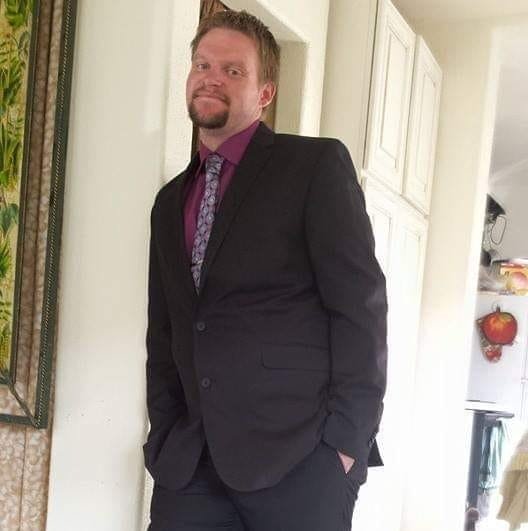Zach N: From Near Death to Recovery from Heroin & Opioid Addiction
Zach Nielson isn’t your typical near-death experience story. He didn’t flatline just once – he did it on six times. And he didn’t come back to life with a renewed sense of awe and wonder at the magic of everyday living. In fact, opening his eyes again just made him angry ... every time.
Literal heart-stopping experiences weren’t always the norm for Nielson. Growing up he was like most children in his area in Eastern Idaho – playing sports, going to school, and attending church with his devout family.
At 14 years old, Neilson started experimenting with cigarettes and pot, but when he hurt his knees playing football, he became addicted to opioids. From there, it was an easy switch to heroin.
Heroin is derived from the opiate morphine. According to drugabuse.gov, “heroin enters the brain rapidly and binds to opioid receptors on cells located in many areas, especially those involved in feelings of pain and pleasure and in controlling heart rate, sleeping, and breathing.” For abusers, the effect is a deceptive “escape” from the pains of living.
The opioid-to-heroin switch is fairly common. The American Society of Addiction Medicine (ASAM) reports that four in five new heroin users started out by misusing prescription pain killers. To an addict, it’s only logical to switch to the illicit drug because heroin is far cheaper and easier to obtain, ASAM reports.
For 20 years, Neilson numbed his brain with $600-700 worth in heroin a day, plus meth to rev his brain back up when he used "too much" dope.
In his mid twenties, he had a great job and was making “killer” money. Even though he was taking two grams of heroin every three to four hours, he didn't think his drug use was a problem because he had money. It’s common for people with drug addictions to not have the courage to face their problem until the funds dry up. The toxic overload of drugs “breaks” their brains, weakening their ability to perceive reality.
For Nielson, it would take many years for him to clearly “see” what was happening. At 28, his wife left him. He was broke. "Every time I woke up, I was angry at the world that I was still alive."
Zach overdosed and flatlined six times, but somehow was brought back to life.
Drug overdose is the leading cause of accidental death in the US. Opioids are the driving force behind the death toll, with 20,101 overdose deaths, and 12,990 overdose deaths related to heroin in 2015.
Overdose death rates are directly parallel to opioid sales. From 1999 to 2008, the increase of overdose death rates correlated to the sale of opioids as well as the number of admissions to substance use disorder treatment for prescription pain relievers.
Nielson was lucky he survived.
The doctors told him, "you should change something 'cause you were meant for something bigger," Nielson related.
Dying made no difference for Zach. He never wanted to change.
Six years ago, his girlfriend took him to treatment at The Walker Center’s residential location in Gooding, Idaho. For two and a half weeks, he had no idea where he was or even who he was. "All the staff hated me," Zach said. "I was rude. I yelled. I was belligerent. But by the time I left, everybody loved me to death."
Counselor Aime Muntz remembers Nielson’s turn around well.
“All of a sudden there was a shift,” Muntz said. “It was like when you looked in his eyes there was actually a glimmer in there and they started to clear. He started to become more active and talking and getting to know his peers.
“We started to see the real Zach come out, where all of a sudden his personality wasn’t buried down with substances anymore, it was actually coming to the surface!”
The best part, Muntz related, was that Nielson “began to recognize that he was still in there. And he wasn’t gone forever. He was actually still a good person and could still engage in recovery.”
Muntz is a Certified Alcohol and Drug Counselor and has seen her share of addicts and alcoholics as they struggle to find their road to recovery.
At the start of treatment, people struggle with withdrawal and post-withdrawal symptoms, for many, it can last most of their treatment, Muntz said. “They are withdrawn and have a difficult time engaging. However, there can be a shift in people, and they start engaging with their peers and with treatment.
“I think for a minute I wondered if Zach was going to get any of that before he completed his program,” Muntz said. “That was what was so wonderful, seeing his lift.”
The shift in clients in recovery is visible to all the employees at the Walker Center. Dietary Supervisor, Marsha Wells, cherishes witnessing the shift as the “light” turns back on in the clients’ eyes. She has spent more than two decades serving food to clients at the Walker Center.
“It’s so awesome to see the change after they’ve been here for a while,” Wells said. “Most of them need to gain weight. It’s rewarding that you can make so many people so happy with just food.”
Wells and her staff don’t just serve food, they serve compassion to people at their lowest point.
“When most of these people come in, they are at the bottom of their lives, and we try to pick them up,” Wells said.
On the day Nielson left, the cafeteria staff made him a sack lunch. There was something special on the bag – a note he’d never forget, “made with love.”
It’s a gesture Wells and her staff give to clients who have no money for food and a long bus ride ahead to get back home.
Still, even after all of that, it wasn't until after Neilson left the Walker Center that it clicked, drugs weren't for him. Even in treatment, he was counting down the days until he could get out and shoot up.
Cravings to use drugs is part of the disease of addiction. It doesn’t go away with recovery.
“At its heart, addiction is a disorder in the brain’s ability to properly perceive pleasure. Addiction is a hedonic disfunction - it is a broken pleasure sense. In the same way a blind person can’t perceive light or a deaf person can’t perceive sound, addicts cannot perceive pleasure correctly,” explained Kevin McCauley, a renowned non-practicing physician, author, and addiction educator.
““And that (misperception) undermines their ability to make choices. Our capacity for free will … rests upon proper processing deeper in the brain and so if pleasure (or more specifically reward) breaks, what goes next is decision making. You have to have a perfectly functioning reward system (that has to be firing on all 12 cylinders) if you’re going to make decisions that consider past consequences and future consequences and are in line with our values.” ”
Dr. Kevin McCauley summarizes the most current neuroscientific research about addiction.
The broken “pleasure sense” in Nielson’s brain was screaming for a high. He was experiencing cravings big time.
Going back to Idaho Falls, he began hanging out with the same people. They were shooting up. He could see the emptiness in their eyes. He recalled his emptiness when he used, but now he was witnessing it from a sober perspective.
People use drugs to escape loneliness and pain, Neilson said, but "it's a lie! You still feel pain!"
Having been imprisoned three times as well as homeless, Zach was tired. He was tired of not having anything and tired of his feet hurting because he had to keep walking – “there was nowhere else to go." He had to get out of Idaho Falls.
Nielson moved nearly 500 miles to Coeur d'Alene. He didn't know a soul. His only possessions were the shirt and pants he was wearing, the latter no longer fit because he'd "gotten too fat." But he raised himself from poverty; he never took a handout. Everything he had, he earned.
Six years later, Zach owns his house. He's a manager of shipping and receiving at a construction company and has a furry Boston terrier companion.
However, the most concrete evidence of his change happened in February this year. Zach underwent knee surgery. He fully disclosed his opioid addiction with his doctor and managed the pain with only 800 mg of ibuprofen. On Oct 7, he celebrated six years of sobriety.
The battle isn't over for Nielson. "Every single day is a fight," he says. "I have dreams about putting a needle in my arm. They're so real, I think I've relapsed."
Nielson stays sober by redirecting his thoughts. "Everything stops at a thought. It doesn't have to turn into an action."
““Every single day is a fight,” he says. “I have dreams about putting a needle in my arm. They’re so real, I think I’ve relapsed.””
Nielson has a message for anyone struggling with addiction. "I've been lower than low. If I can do it, you can do it. The fact that I'm doing what I'm doing right now is a miracle, nothing short of a miracle." He urges addicts to get "a little self-worth. Once they get a little bit more, they'll want a little more and a little more."
Muntz, his previous counselor at The Walker Center, is proud of Nielson for telling his story.
“When someone who struggles with addiction starts telling their story,” Muntz said, “they gain this incredible amount of momentum in their recovery. It is part of the 12 steps to give back, and when you give back, you may be helping someone else, which is wonderful, but you’re also helping yourself. I think our burdens get lighter the more we share them, especially if we’re sharing them to help other people.”
Every day, Zach tries to be a better person than the one he was before. "If you're doing good, good things will happen," he says.
Get The Latest Updates In Drug & Alcohol Recovery News To Your Inbox
If you opt into our newsletter, we promise to respect your privacy. We don’t share your information with any other parties. Sign up to get info about the science behind addiction, the latest trends in addiction treatment, inspirational recovery stories, and much more.






